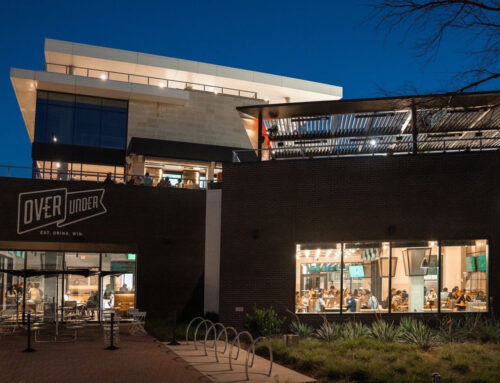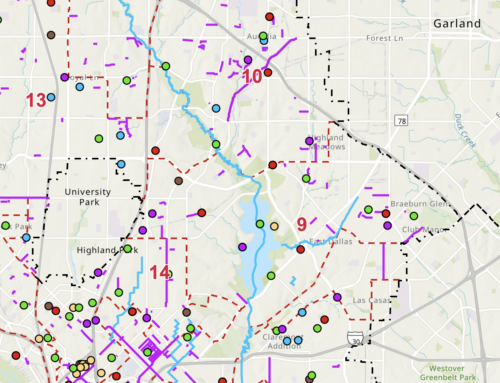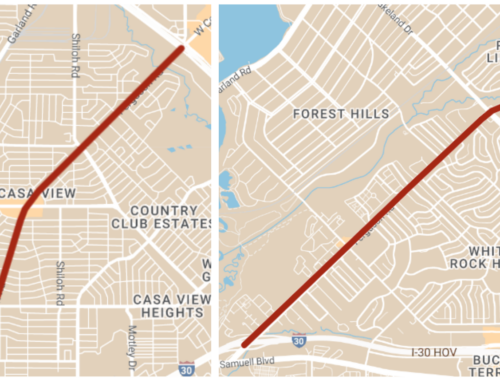On the afternoon of December 5, people on both sides of North Central will be getting an early Christmas present when the rebuilt expressway has its grand opening. After years and years of extremely complicated and inconvenient construction, the old freeway will finally have multiple lanes open on both sides from Downtown to LBJ Freeway and beyond.
The idea of a “Central Boulevard” extending north from Downtown was first proposed in George Kessler’s 1911 Plan for Dallas’s future development. Not until the late 1940s was work begun on the highway, on a route formerly used by the Texas Central Railroad line.
Even then, a lot of skeptics hooted at the idea of a limited access highway built to reach small farming communities like Richardson and Plano. The four lanes of pavement were considered excessive by many, with one lane each way thought to have plenty of capacity. However, after World War II, in the Dallas area as elsewhere, outlying rural areas began to be subdivided and developed as automobile-dependent suburbs.
Then, in the fifties, TI, Collins Radio and other new industries began to grow quickly in northern Dallas County. Before long, not only was the land along Central developed, but the highway was being used far beyond its capacity. First the Meadows Building, the first high-rise office building north of Downtown, was built, followed by many others as well as shopping centers like NorthPark, homes, apartments and others.
By 1970, when I took Driver’s Ed, Central already had a fearsome reputation for heavy and dangerous traffic, terrifyingly short entrance ramps and a host of other obsolete and scary features. In the 80s it finally became apparent to enough people that Central was choking on traffic, and that both Dallas and the northern suburbs were going to take an economic hit if something wasn’t done to improve it.
Fortunately, civic leader Walt Humann, aided by dozens of others, took up the challenge of guiding the massive project. After hundreds of meetings and thousands of hours, a design was approved that not only worked from an engineering standpoint but had the support of property owners and neighborhoods all along both sides of Central. Of course, like any public process, this one had its bumps in the road. East Dallas, in particular, had to fight hard to keep the freeway from being double decked, and also strongly supported putting the DART rail line in a tunnel under the Expressway.
In hindsight, both positions were ultimately proven to be right, and the rebuilt highway will have a vastly better design than it would have had without that community input. The result is a well-designed, much more efficient artery, which will now actually add value to the commercial and residential property nearby. Even though traffic will continue to be heavy and may reach capacity again, it should still be much better than before.
East Dallas, in particular, should benefit by losing some of the cut-through traffic on Matilda, Skillman, Abrams and others caused by North Dallas motorists dodging lane closures on Central. The rebuilt bridges over the Expressway should also make it easier to get from East Dallas to Oak Lawn and Uptown and back. Having the new Expressway open — having it built below grade and otherwise being about as attractive as you can make an eight-lane freeway — should actually make our East Dallas neighborhoods even more desirable, and thus more valuable and the subject of more investment in high-quality renovation and redevelopment.





